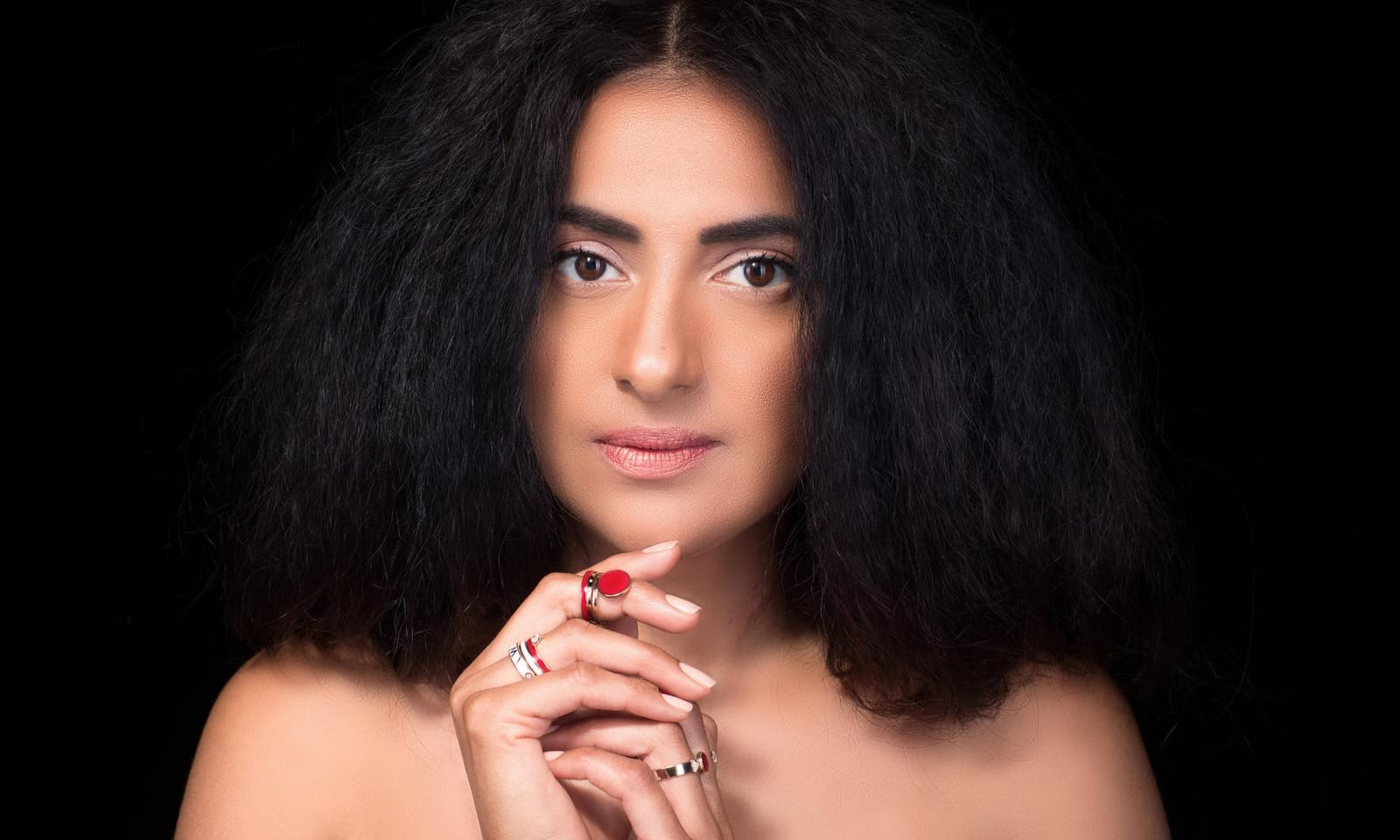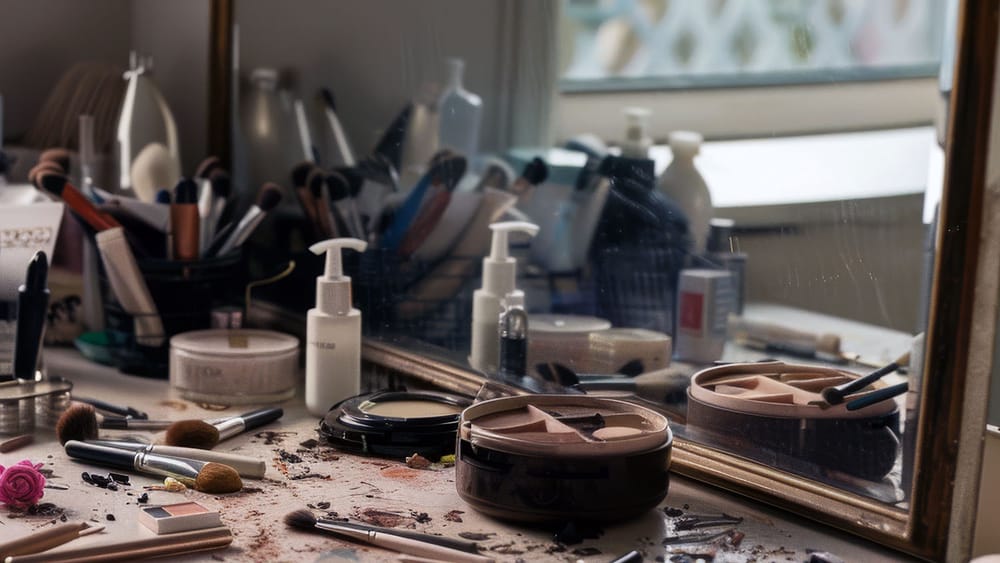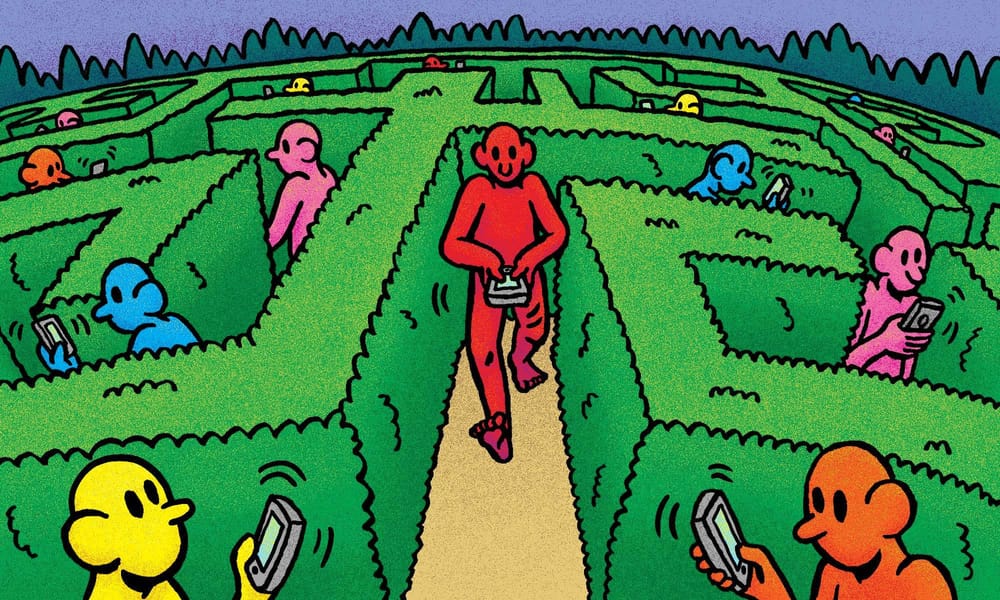In the face of the many seemingly unsolvable problems of the world, it takes courage, faith and determination to take on the role of a superhero. Colours of a Changemaker is a series of interviews with Black, Indigenous and People of Colour from around the world who are using their vocation to create social and environmental change. As Gandhi once said, we must be the change we want to see in the world, and these changemakers are doing just that through their art, music, written works, social platforms and much more.
Harvinder Kaur Keila is a businesswoman, jewellery designer and mom based in Los Angeles, California. An environmental consultant turned jewellery designer, she is now the chief creative officer behind the empowerment brand Kaura Jewels. The inspiration for her designs comes from her rich Punjabi heritage—its great Sikh warriors, shining jewels embedded in armour, shields and swords. Through her jewellery, she hopes to help women find their inner strength, believe in themselves and reach their full potential.
How did your interest in jewellery making develop?
I’ve always had an interest in art, although I ignored the calling growing up until I was in my 20s, and only then did I start dabbling in oil paints, sketch and water colour. There is an elevated satisfaction with creating jewellery for me. Perhaps because it’s art with meaning that can be held and worn as an amulet or powerful reminder.
In 2007, a few years after I started working in California, I became curious about metal-smithing. I noticed a co-worker wearing some fabulous jewellery and I asked her about it. When she replied with “I made it,” I knew right away that was something I’d love to dabble in. So then for many months after work, I would go to a little trailer the Oxnard Gemological Institute had set up for students and learn to cut, solder, hammer, polish precious metal and set gemstones. I love working with my hands! A year later, I found myself having just as much fun selling the jewellery on Etsy as making it. I learned how to photograph, copywrite, understand Etsy’s algorithm, and most importantly, communicate with customers.
You started your jewellery line as a stay-at-home mom. What were some of the challenges you faced?
The biggest challenge was the heavy feeling of guilt for sending my daughter to Montessori school at 18 months. Drowning in postpartum depression, my thinking was muddy, but after giving myself space and allowing myself to be creative, there was a feeling of clarity that surfaced each day. Other challenges included working in the evening and running events on the weekends, which interfered with family time. I missed birthday parties and downtime with family. Also, financially, with running your own business, there will always be great challenges. For me, making decisions on the marketing budget to starting a new piece are always difficult—I don’t have any investors. If there are investors out there, I’d love to chat.
Is there enough support out there for mothers who would like to start their own business? If not, what do you believe needs to change and how can we as society address the issues that exist?
I believe there is support out there for women starting their own business, but they have to find it, join it and also be the support. Personally, just sharing my empowerment story of how I overcame postpartum depression has helped hundreds of women, and I am so grateful for that. I was thankful for finding the Women’s Jewelry Association in 2014, where I built friendships, received scholarships and learned about industry insights. Another great organisation is the Accessories Council; we discuss trends, participate in design competitions and sometimes do yoga and engage in dinner events with each other.
I read about how your daughter had extreme colic for the first nine months of her life and you went through quite a difficult time. Can you tell us a little about that experience and how it pushed you to launch your business?
Yes, so back in 2011, I was thrown for a loop when I became a stay-at-home mom to a newborn daughter who had extreme colic the first nine months of her life. In my unfamiliar role as a stay-at home mom with a crying infant, I found myself completely off balance and [felt] a sense of hopelessness. In the process of acknowledging my postpartum depression and actively dealing with it, I started a creative journey. It began by engaging in deep thought and trusting my intuition. As a child growing up in an Italian neighbourhood in Toronto, Canada, I hadn’t had much exposure to my Indian heritage, so I decided to spend some time studying my Punjabi history. I was drawn to a book with stories and images of kings and queens carrying shields and swords crafted from gold and ruby and emeralds and engraved with beautiful animal imagery. One image in particular—of a warrior-woman—struck a chord with my own warrior spirit and reminded me of my forgotten self-worth and passion for life. I felt if I wore something that represented protection, like a shield or a sword, then maybe I’d feel strength like the warrior-woman in the book. I was inspired to create a distinctive double-headed horse pendant inspired by an ancient dagger but designed from a place of symmetry, where one head represented me and the other, the challenges of being a new mom. I wore the piece every day, and it became a reminder to practise acceptance without judgment, allowing for moments of joy and sadness and relaxation in response to resistance—basically, a call to find balance and harmony in my life. The piece felt protective, and just knowing it existed already made me feel better. This piece led to the next and so on. The creation of the jewels became medicine for my own soul. Inspired from Indian traditional armoury from a bygone era, my pieces serve as a bold reminder that we are powerful beyond measure and that our self-worth, our light is ever-present. Today, my daughter is my teacher and source for laughter and connection to nature’s beauty and wonder. She knows the story behind each piece and encourages me to continue sketching and creating.
After you launched your business, you worked for a year in a jewellery store. Can you tell us about that? What did you learn about people’s tastes in jewellery during your time there? Are customers mostly trend-driven or do they also seek meaning in the pieces they choose to wear?
Working at the fine jewellery counter at Neiman Marcus was an insightful experience. I learned an incredible amount about people’s shopping behaviour. There are those who are self-empowered and purchase jewellery for themselves for each birthday or anniversary or work promotion; then there are those who expect their husbands to make the purchase for them after they have selected the piece; and then there are those who spontaneously purchase because they are having a great day! Those purchasing costume jewellery were definitely trend-driven, while those purchasing fine jewellery were seeking something special. From the relationships I made, I learned many who purchased fine jewellery were also gifted fine jewellery from their parents or grandparents when they were younger and had an affinity towards precious jewels.
What inspired you to select the bindi as your central theme while creating the Bindi Collection? What does it signify to you?
In 2016, I was searching for meaning and purpose in myself and in my name. I came to realise how significant my nickname, Bindi, really was. So significant, in fact, I wanted to share the wisdom behind the bindi with the world. After much research, I believe our two physical eyes are used for seeing the external world, while the third focuses inward, towards our inner wisdom. I felt that a bold colourful dot representing the bindi in ring, earring and necklace form, set in gold, would remind the wearer of their inner wisdom.
Your jewellery line represents protection, strength and clarity. Can you tell us how the Bindi Collection represents these three qualities?
The Kaura brand represents self-empowerment and I believe empowerment is achieved when one protects themselves (from negative self-chatter) and when one connects with their inner strength and adds balance into their life more frequently. This leads to finding clarity and wisdom in certain situations. I believe one can connect with their inner wisdom once they elevate themselves through these stages of self-empowerment. Within the Bindi Collection, there are symbols. For example, I set trillion cut diamonds pointing to the enamel bindi in the rings as a directional reminder to the wearer, to look within for wisdom. I also deliberately chose red, black and white enamel for the bindis: red, start looking within; black, a reminder to place trust in the unknown; and white, a reminder to continually search for your own truth.
The jewellery you create has a very transportive quality, especially since it is directly linked to your heritage—something that can often be lost as a “third culture kid.” How have your customers responded to this, in particular your Indian customers? Has it evoked memories of their heritage?
I love this question. Yes for sure. Customers tell me the pieces they wear bring out their ethnicity and compliments their current/present style. For example, they will easily embrace wearing a piece from the Bindi Collection over actually adorning a bindi on their forehead, because there is no judgment. Customers will also share stories their grandparents shared with them as children and sometimes even show me tattoos inspired by their homeland… symbols, letters from the Punjabi alphabet, lion tattoos, etc.
Do you have any advice for mothers who are struggling emotionally? How can they find inner strength?
My answer is conscious self-care. Listen, I was fearful to wake up each day, and what I learned to do was to acknowledge what I was grateful for as soon as I woke. At first (for many months), I didn’t believe I was grateful for anything I was saying. But then eventually, gradually, I realised my thoughts were not forced. These positive thoughts lead to a slightly better morning for me, which also led me to becoming self-aware once again. I also recommend checking in with one’s self-talk as often as possible in the day. Perhaps while driving or washing dishes or while in the shower. If you hear negative self-chatter, switch your thoughts to anything positive. Combine this practice with going for walks and adding the vitamins you need. The next step is talking about your struggles with people. Moms can and should lean on other moms. Lastly, wearing or reading a daily reminder that this struggle is temporary, and you will come out of it.
You can follow Harvinder Keila on Instagram here, on Twitter here and you can learn more about Kaura Jewels here.







